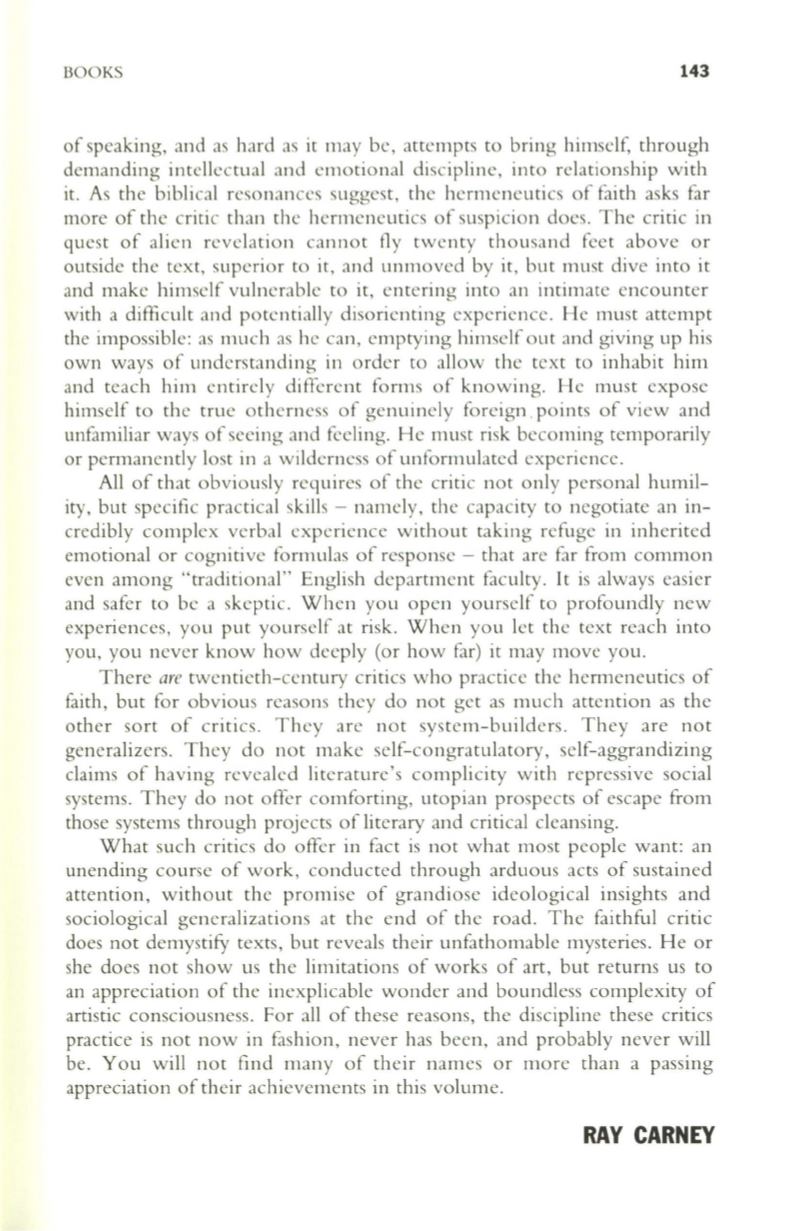
BOOKS
143
of speaking, and as hard as it may be, attempts to bring himself, through
demanding intellectual and emotional discipline, into relationship with
it. As the biblical resonances suggest, the hermeneutics of faith asks far
more of the critic than the hermeneutics of suspicion does. The critic in
quest of alien revelation cannot fly twenty thousand feet above or
outside the text, superior to it, and unmoved by it, but must dive into it
and make himself vulnerable to it, entering into an intimate encounter
with a difficult and potentially disorienting experience. He must attempt
the impossible: as much as he can, emptying himself out and giving up his
own ways of understanding in order to allow the text to inhabit him
and teach him entirely different forms of knowing. He must expose
himself to the true otherness of genuinely foreign .points of view and
unfamiliar ways of seeing and feeling. He must risk becoming temporarily
or permanently lost in a wilderness of unformulated experience.
All of that obviously requires of the critic not only personal humil–
ity, but specific practical skills - namely, the capacity to negotiate an in–
credibly complex verbal experience without taking refuge in inherited
emotional or cognitive formulas of response - that are far from common
even among "traditional" English department faculty. It is always easier
and safer to be a skeptic. When you open yourself to profoundly new
experiences, you put yourself at risk. When you let the text reach into
you, you never know how deeply (or how far) it may move you.
There
are
twentieth-century critics who practice the hermeneutics of
faith, but for obvious reasons they do not get as much attention as the
other sort of critics. They are not system-builders. They are not
generalizers. They do not make self-congratulatory, self-aggrandizing
claims of having revealed literature's complicity with repressive social
systems. They do not offer comforting, utopian prospects of escape from
those systems through projects of literary and critical cleansing.
What such critics do offer in fact is not what most people want: an
unending course of work, conducted through arduous acts of sustained
attention, without the promise of grandiose ideological insights and
sociological generalizations at the end of the road. The faithful critic
does not demystify texts, but reveals their unfathomable mysteries. He or
she does not show us the limitations of works of art, but returns us to
an appreciation of the inexplicable wonder and boundless complexity of
artistic consciousness. For all of these reasons, the discipline these critics
practice is not now in fashion, never has been, and probably never will
be. You will not find many of their names or more than a passing
appreciation of their achievements in this volume.
RAY CARNEY


